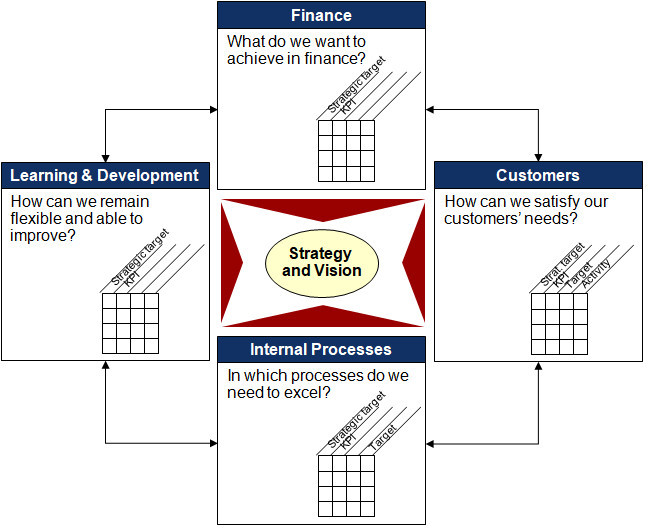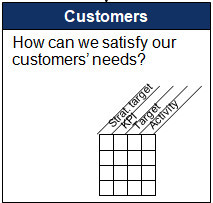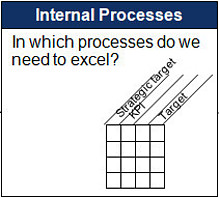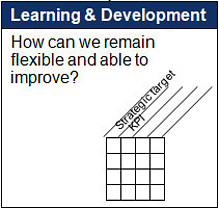The Balanced Scorecard is an interesting approach that, at the time or its origination, called to the attention of managers that there was more to measuring performance than just financial results.
One of the originators, Dr. Robert Kaplan, was the Dean of the business school are Carnegie Mellon when I attended, and he was an excellent, insightful, out-of-the-box thinker in many ways. Not long after that period at Carnegie Mellon in the early 1980s he went to Harvard, where he and Dr. David Norton originally developed the Balanced Scorecard.
The Balanced Scorecard’s purpose is to broaden the perspective on business performance from primarily financial to considering other perspectives – to give a more “balanced” view of performance.
From a project management viewpoint, I thought it natural to ask, “What are the benefits of a balanced scorecard for a Project Manager?” At the outset, I think the answer is twofold:
- Project outcomes need to be mapped back to specific metrics in the balanced scorecard.
- The Balanced Scorecard approach can be borrowed to expand the approach to metrics on any project or portfolio.
The Balanced Scorecard starts with the various perspectives for identifying appropriate performance metrics. As this tool was developed some time ago, we’ll explore the question if today even more or different perspectives could be helpful.
The Balanced Scorecard Perspectives
The following graphic displays the four perspectives of the Balanced Scorecard.

The graphic shows the four perspectives and indicates the need to identify key metrics for each of the four perspectives. It indicates that each of the perspectives is built around the company strategy and vision at the core. It also shows linkages among the four perspectives – potentially between any combination of the perspectives, and not just as the arrows show.
Let’s explore each of the perspectives individually, keeping in mind the possibility of additional perspectives that might be added.
Finance Perspective
 This is all about measuring performance from the financial perspective. It can include anything from traditional financial measurements such as balance sheet and income statement, but can also include a plethora of measurements deeper within the organization. A particular financial ratio, for example, may apply well to a specific business, so it should be included in its financial measurements.
This is all about measuring performance from the financial perspective. It can include anything from traditional financial measurements such as balance sheet and income statement, but can also include a plethora of measurements deeper within the organization. A particular financial ratio, for example, may apply well to a specific business, so it should be included in its financial measurements.
Thus, the balanced scorecard opens up possibilities to think outside the box even for financial measurements. There could be some specific financial metrics pertaining to specific strategic goals, allocation of funds to non-traditional areas, or even de-emphasizing some traditional measures that have little meaning, such quarterly performance measures.
Although the finance perspective has much in common with the ‘only’ perspective before thinking in terms of balanced scorecards, from a balanced scorecard perspective it can be reshaped with an open mind and customized to the situation.
Customer Perspective
 This is a major shift from just thinking about the company as serving the shareholders. Certainly the customers are stakeholders. They have a certain dependency on the company, and have certain expectations.
This is a major shift from just thinking about the company as serving the shareholders. Certainly the customers are stakeholders. They have a certain dependency on the company, and have certain expectations.
In thinking about the customer perspective, companies can think about many things related to their current and target customers – and develop corresponding metrics on their progress toward strategic goals. Here are some areas to consider.
- What does the customer expect in terms of customer support?
- What is the customer avatar? If there are multiple avatars, what do they have in common?
- What is the ‘job to be done’ for the customer? Again, there are probably multiple.
- What will be the customers’ needs in the future?
- What would delight the customers beyond the requisite products and services as currently provided to them?
These are just a few ideas to think about. There are many tactics, tools, and systems that provide touch points with customers and related insights.
Internal Processes
 How effective are the processes, tools, techniques, and systems that you currently deploy?
How effective are the processes, tools, techniques, and systems that you currently deploy?
What information do they generate that can help you to improve them?
What additional processes, tools, techniques, and systems would help improve the company effectiveness?
Is there information out there, that, if you could generate it, would strengthen the company?
Internal processes clearly can generate competitive advantage. On the flip side, they can also institutionalize what the company is doing, making it more difficult to change. While it is important to improve internal processes, it is just as important to identify which processes may be ineffective and replace or remove them.
Balanced scorecards with the right metrics can help you to determine how you are doing on your internal processes and which require attention.
Learning and Development
Learning and development refers to education and training of the workforce. However, it can also refer to deliberate learning corporate-wide in the face of rapidly changing conditions.
Lots of metrics used in the past have survived the digital change of the past 20 years or so. An example is metrics related to skill sets of employees. Programs for training employees in core functions is another.
Learning and development has become much more digitized. For the sake of efficiency and effectiveness, companies need to devise strategies and the accompanying metrics for how to best leverage digital learning and development.
The pace of change has led to the need to devise projects whose who purpose is directed learning. It could be learning about what customers want, what the best solution is, and how much they will pay for it. Or it could be to learn what processes are effected, to gain a better understanding of the product life cycle in a particular situation. A balanced scorecard with relevant metrics pertaining to learning initiatives can be a critical facet of strategic implementation today.
Extending the Balanced Scorecard Perspectives
Is the balanced scorecard still relevant today?
Based on the analysis above, each of the four perspectives is still very relevant, and the framework allows for adjustment of metrics to fit the evolving situation.
The four perspectives also maintain relevance when viewed against the idea of invention in the realm of products, processes, brands, or business models; the balanced scorecard can be adjusted accordingly to address these more innovative things head on.
Where I think the balanced scorecard is lacking in its original concept is that it appeared to be purely static – and minimally dynamic. It addressed primarily static metrics – the situation as it exists, and not at all how to get to a new target state. Ongoing success is dependent upon getting to a new state – increasingly by innovation – and less on maintaining an existing state. However, with the four perspectives, I think the framework can be adapted and thus is still relevant and effective.
The four perspectives may fall a little short in some other ways. Recent trends, for example, have brought into focus broader stakeholder interests around the community, the environment, and other ‘social’ stakeholders. I do not see a clear fit between these and any of the four perspectives, but it is easy to add another perspective and use the same balanced scorecard framework.
Benefits of a Balanced Scorecard on Projects
Balanced scorecards are focused on metrics and implementation. That sounds like a perfect match for project management.
—————————————-
I recommend these PM templates (paid link):
—————————————-
On one hand, armed with explicit target metrics from the organization level balanced scorecard, PMs can easily extract the relevant metrics to use on their projects. Project performance and deliverables can map directly back to strategy – which ultimately is the purpose of a balanced scorecard!
In addition, any project can use the balanced scorecard framework as an approach to devise their own custom metrics. Balanced scorecards provide a nice conceptual framework, and a convenient way to report on progress. They provide a way to think beyond the obvious measurements that might miss something important.
Some additional Resources:
- You may find it helpful to leverage ready-made Balanced Scorecard Excel Templates.
- You may find it helpful to read the 86 page pdf entitled, “Mining Balanced Scorecards: from Strategy to Execution“
—————————————-
I recommend these strategy resources (paid link):
—————————————-


